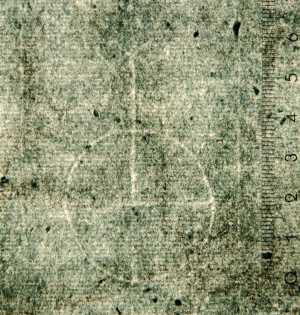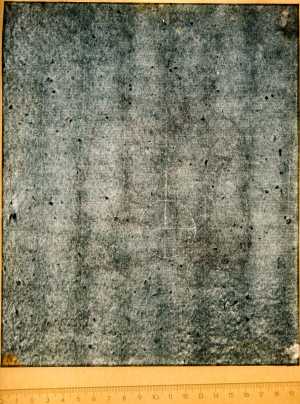Specifications
| Title | Study of the Recumbent St Sebastian |
|---|---|
| Material and technique | Black chalk, heightened with white, on blue paper (recto and verso) |
| Object type |
Drawing
> Two-dimensional object
> Art object
|
| Location | This object is in storage |
| Dimensions |
Height 240 mm Width 197 mm |
|---|---|
| Artists |
Attributed to:
Benedetto Caliari
Previously attributed: Carlo Caliari |
| Accession number | I 46 recto (PK) |
| Credits | Loan Stichting Museum Boijmans Van Beuningen (former Koenigs collection), 1940 |
| Department | Drawings & Prints |
| Acquisition date | 1940 |
| Creation date | in circa 1582-1583 |
| Watermark | Bisected circle, surmounted by a small cross (65 x 37 mm, below the centre, on P4 of 7P, vH, cropped folio sheet), similar to Briquet 3039 (Tyrol 1560, somewhat smaller), 3041 (Reggio-Emilia, 1580, somewhat larger), no comparable specimens in Piccard Online |
| Inscriptions | 'di Carleto' (below right, pen and brown ink), 'C.C.No:15' (verso, below right, pen and brown ink) |
| Collector | Collector / Franz Koenigs |
| Mark | Z. Sagredo (L.2103a) inv. C.C.No:15, F.W. Koenigs (L.1023a deest) |
| Provenance | Zaccaria Sagredo (1653-1729, L.2103a, inv. 'C.C.N.o 15'), Venice; -; Franz W. Koenigs (1881-1941, L.1023a), Haarlem, acquired in 1927 (Carletto Caliari); D.G. van Beuningen (1877-1955), Rotterdam, acquired with the Koenigs Collection in 1940 and donated to Stichting Museum Boijmans Van Beuningen |
| Exhibitions | Venice-Florence 1985, no. 42; Rotterdam 2010-2011 (coll 2 kw 8-9); Verona 2014, no. 6.8, ill. |
| Internal exhibitions |
De Collectie Twee - wissel VIII, Prenten & Tekeningen (2010) De Collectie Twee - wissel IX, Prenten & Tekeningen (2011) |
| Research |
Show research Italian Drawings 1400-1600 |
| Literature | Tietze/Tietze-Conrat 1944, p. 358, no. 2202 (Carletto Caliari); Aikema/Meijer 1985, no. 42, ill. (Carletto Caliari (?); Ruggeri 1985, p. 236; Dalla Costa 2012, pp. 88-89, 91-94, ill. 14-15 (Benedetto Caliari); Verona 2014, no. 6.8, ill. (Benedetto Carliari); Meijer 2017, p. 89, no. 6 (Benedetto or Carlo Carliari) |
| Material | |
| Object | |
| Technique |
Highlight
> Painting technique
> Technique
> Material and technique
|
| Geographical origin | Italy > Southern Europe > Europe |
| Place of manufacture | Venice > Veneto region > Italy > Southern Europe > Europe |
Do you have corrections or additional information about this work? Please, send us a message


























